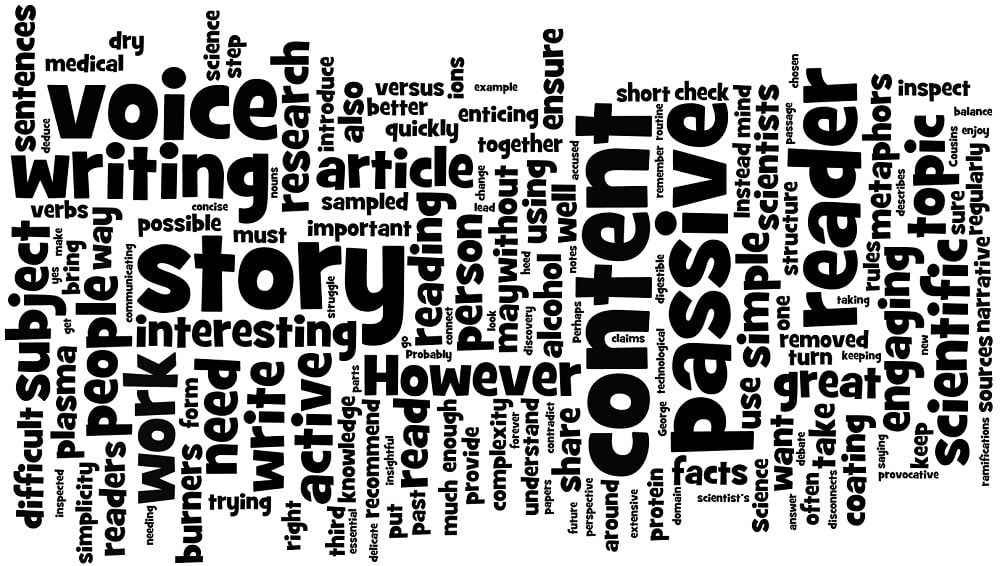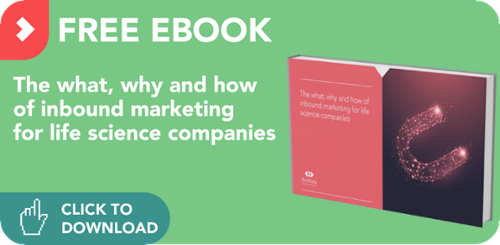Anyone can write, but writing great scientific content that is engaging, provocative and memorable is much easier said than done, especially when it comes to technical topics. However, with a few simple rules in mind, you can start to develop science content that people will want to read.
Do your homework
The secret to good writing is familiarity with the subject. To turn a complex scientific topic into a concise, insightful and digestible piece that engages the reader, you need to be confident that you understand what you’ll be writing about. You don't need to become a leading expert in the field, but you have to be able to communicate concepts faithfully.
It's also important to cite reputable sources. By doing so, you'll show the reader you've conducted proper research and can be more confident that the information you're relying on is correct. Factual inaccuracies in your scientific content can cast doubt on your company's expertise. Probably more than any other target audience, scientists will be quick to pounce on any inaccurate claims, so it's imperative to have rigorous processes in place to ensure the credibility of the content you produce.
Keep it simple
Even when writing about complex, scientific concepts, it's important to understand what your key messages are and what information is essential to effectively communicate your story. This is essential whether you're writing an email or an ebook. Even in longer content formats, such as whitepapers, science writers don't have the space to discuss each aspect of a subject. What's more, having a clear story that provides interesting scientific knowledge easy and engaging to read
It’s also important to apply our rule of simplicity to language. Purposely restricting your vocabulary isn’t necessarily required, but avoiding needlessly ‘wordy’ sentences and phrases will keep more people reading your work. Using metaphors for example can be a great way to get a difficult concept across to a reader. However, ensure your metaphors are crystal clear — if in doubt, leave them out.
Find your voice
Science writing in the past has — rather unfairly — been accused of being dull and dry. While this can be due to the subject of the article, more often than not it’s down to style. That’s right, we're talking about the dreaded third-person narrative using the passive voice. The debate on active versus passive voice is one that will likely continue forever, and to be fair, both have their place.
Beware, the classic passive voice used in most scientific journals is very prone to introducing excessive ambiguity and complexity. So, if using the passive voice, writing in the simple passive form is most effective the vast majority of the time, for example, 'the ions from the plasma were sampled by' rather than 'ion sampling from the plasma was achieved by'.
The active voice describes what the scientists did, from the scientist’s perspective, allowing a reader to form a natural connection with the content. Therefore, to successfully engage your readers, we recommend writing in the active voice whever possible and appropriate.
For an interesting examination of passive versus active voice, have a look at this selection of notes on the subject, put together by B. Cousins at UCLA.
Don’t exaggerate
Science has its share of awe-inspiring stories that can have huge ramifications on the future of society, from technological innovations to medical breakthroughs. However, the vast majority of science is not revolutionary. Instead, it’s comprised of many years of routine work upon which great discoveries are built. If your story isn’t a ‘jaw-dropper’, don’t pretend that it is.
By all means, go ahead and write enticing headlines, but stick to the truth; nobody will read your second article if they feel they’ve been duped after your first one. A skilled writer can provide the necessary context to ensure a story remains enticing without needing to overplay its significance.
Be the storyteller
Ultimately, writing engaging content is about telling a story. You need to bring the reader in and allow them to connect with your article in some way – they need to have empathy for any of the characters you introduce, and they need to be inspired by the topic you’re trying to share. Your ability to turn a potentially dry topic into an interesting story is what will keep people reading your work.
An article about the discovery of a new protein structure with a novel antigen-binding domain may bring in a few specialist readers, but otherwise, it could fall well short of its potential. However, a story about the five-year struggle of a group of scientists trying to deduce the structure of a protein that has implications for medical research has a much broader appeal. Perhaps more importantly, people remember a story with a strong narrative flow much better than they do a list of facts.
Putting it all together
To write engaging content, you have to take the reader on a journey. You have to lead them through the story, pointing out interesting sights and explaining difficult concepts along the way. The reader should come away feeling entertained and informed without being patronised. Striking that balance takes practice, but keeping these simple rules in mind will help send you down the right path to writing great scientific copy!
Leveraging your content to drive marketing results
Quality science content is great fuel for powering inbound marketing programmes that drive brand awareness, build trust and generate leads. To find out how to leverage your content as part of a high-performing marketing program, download our inbound marketing ebook today:





